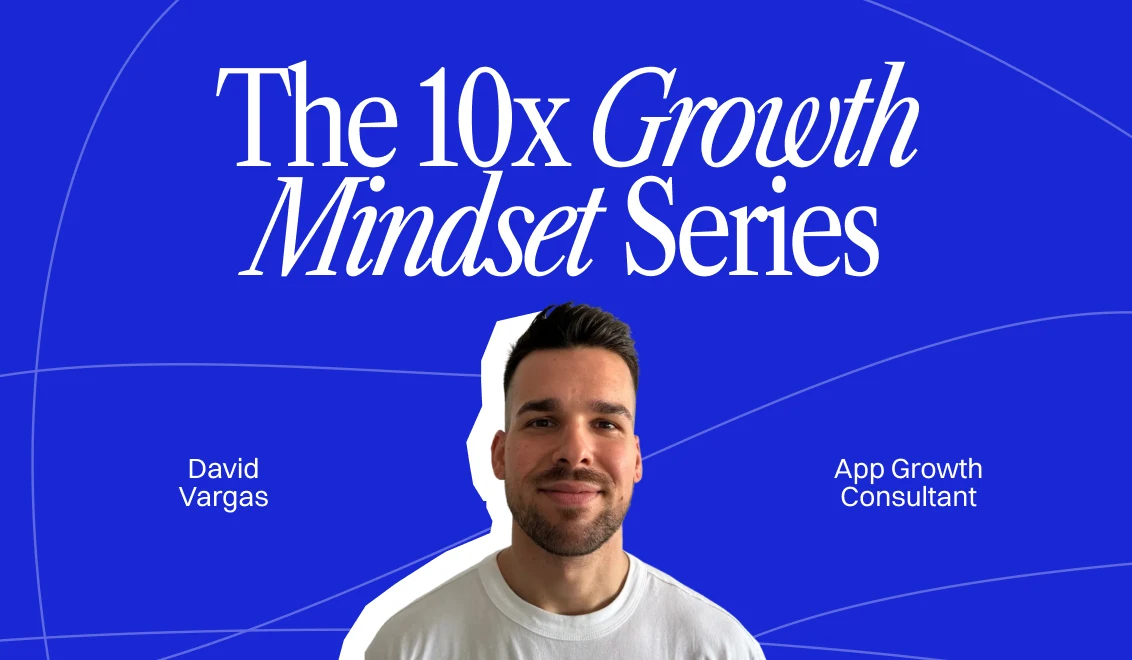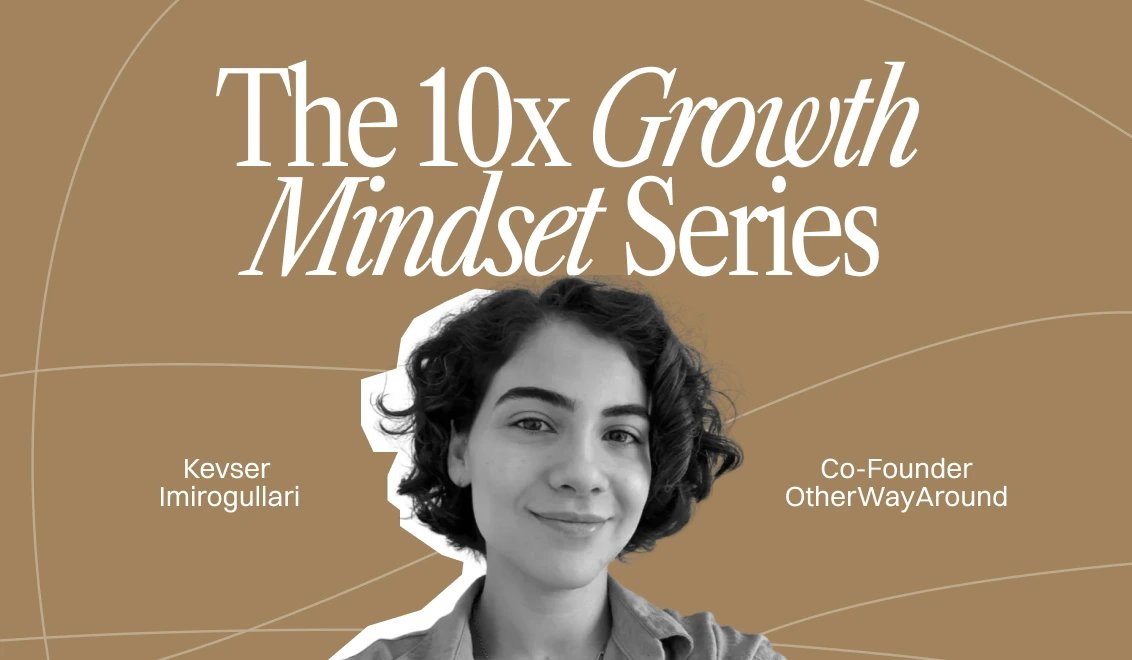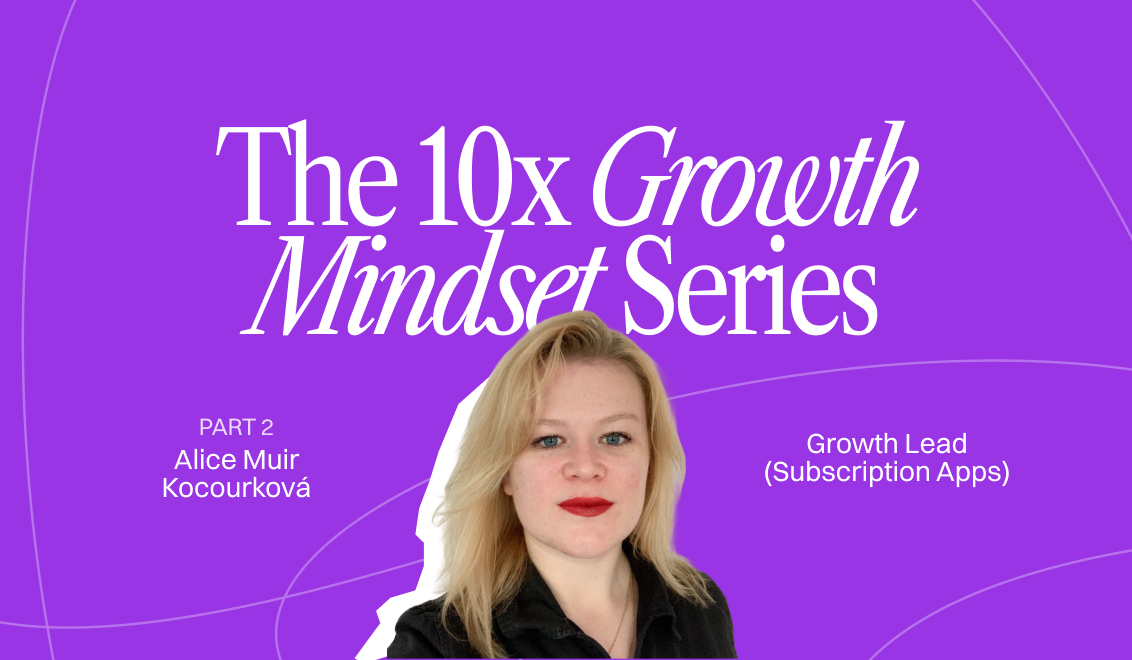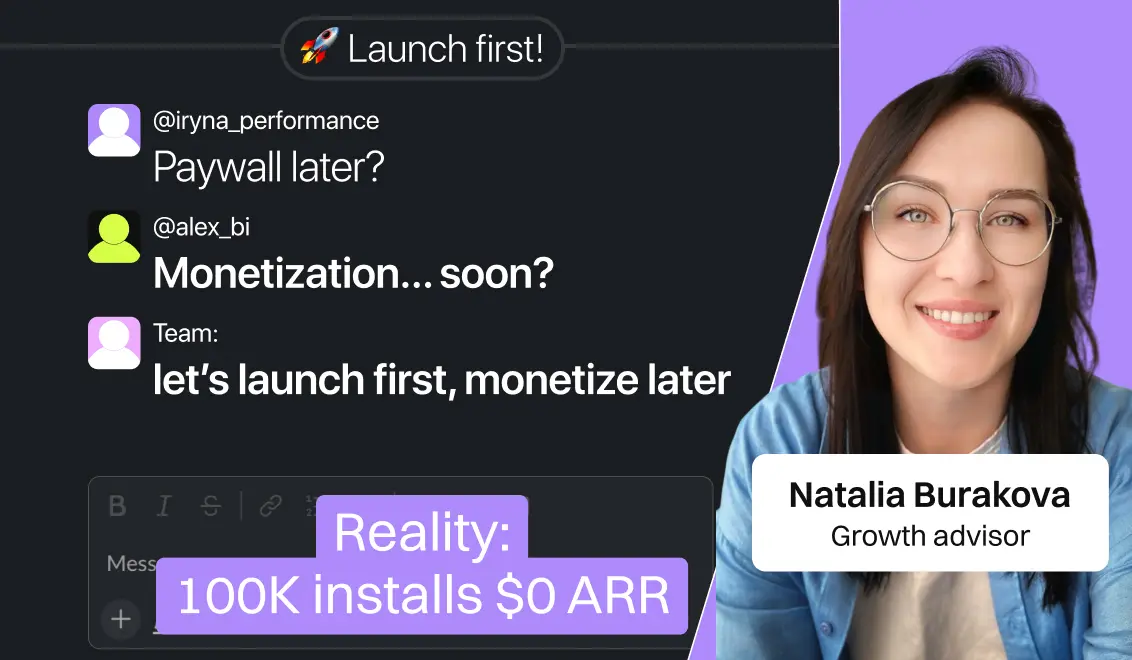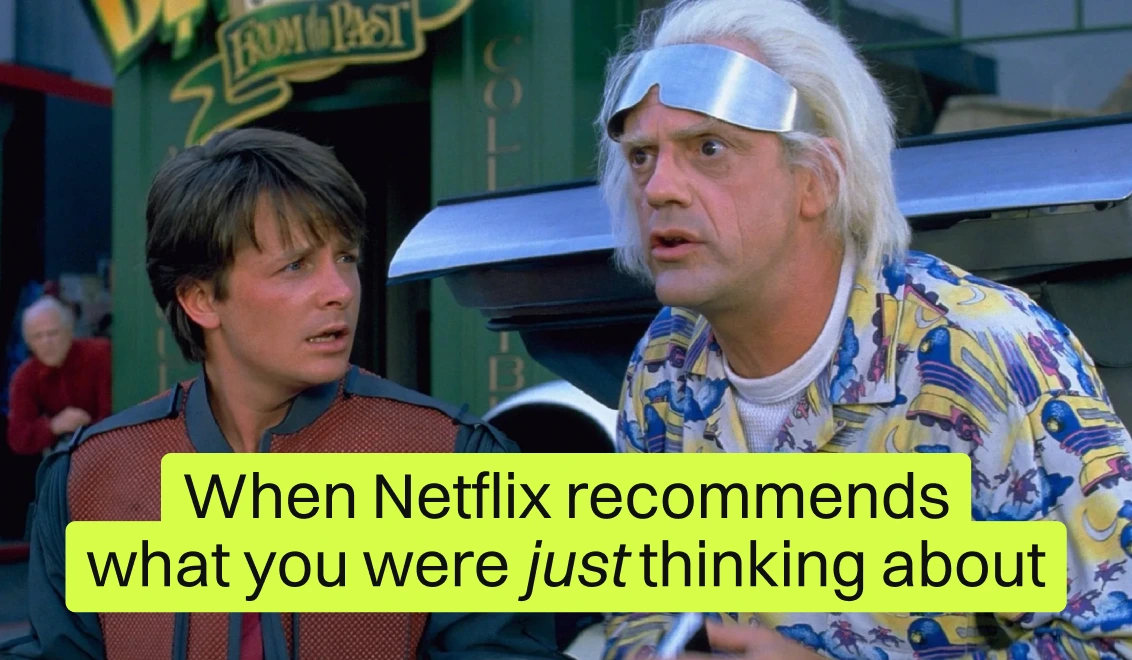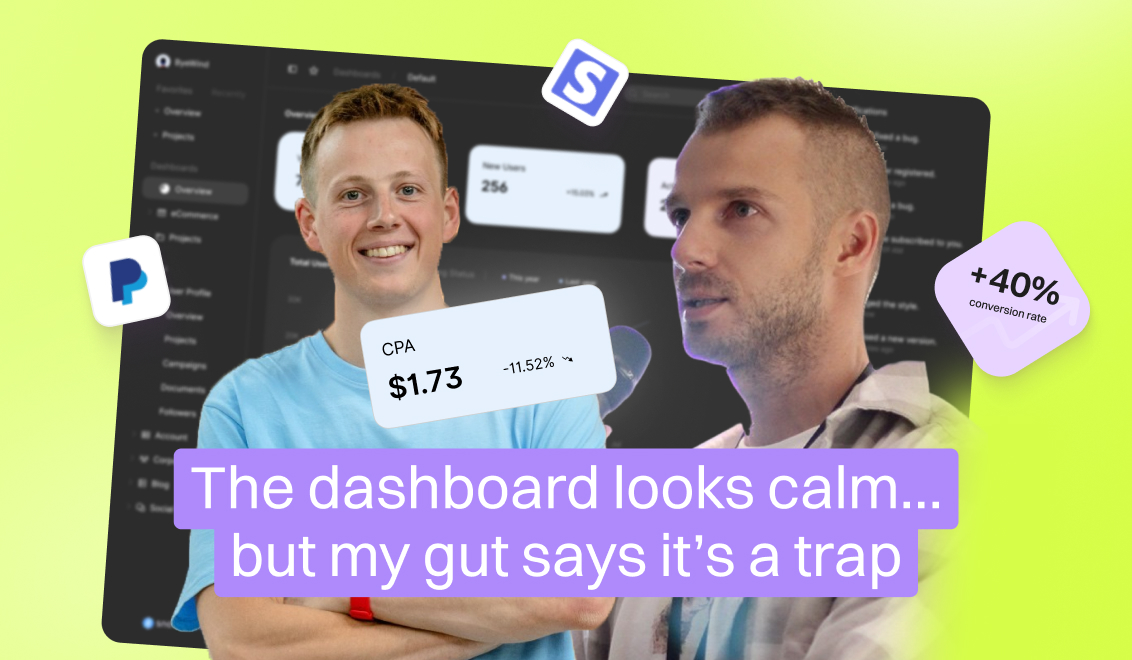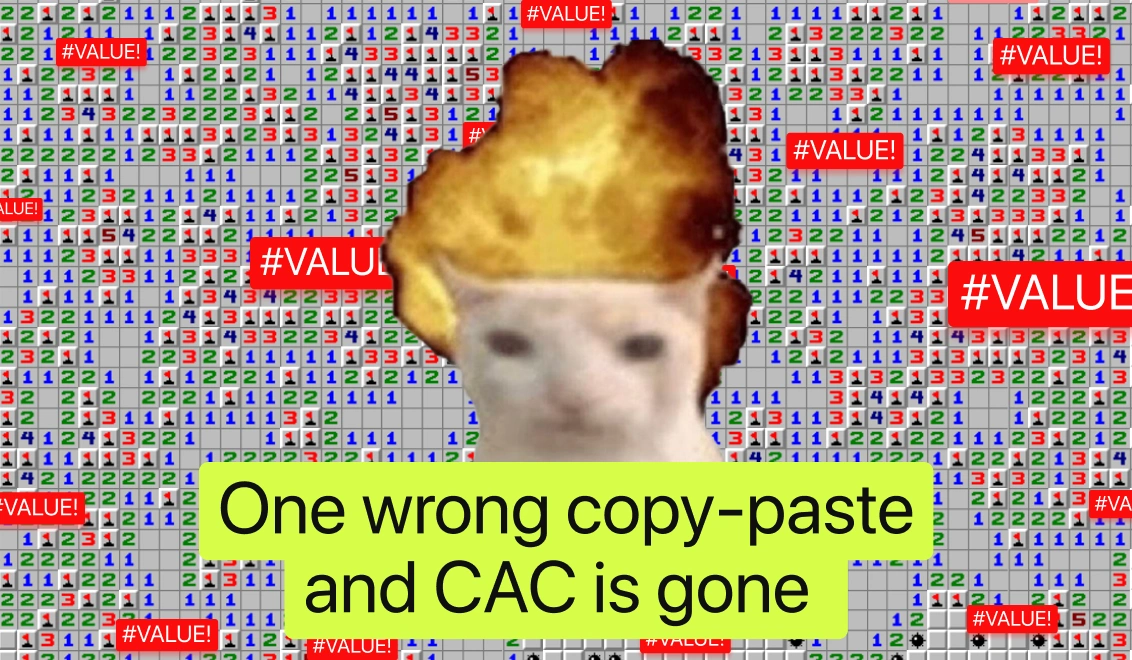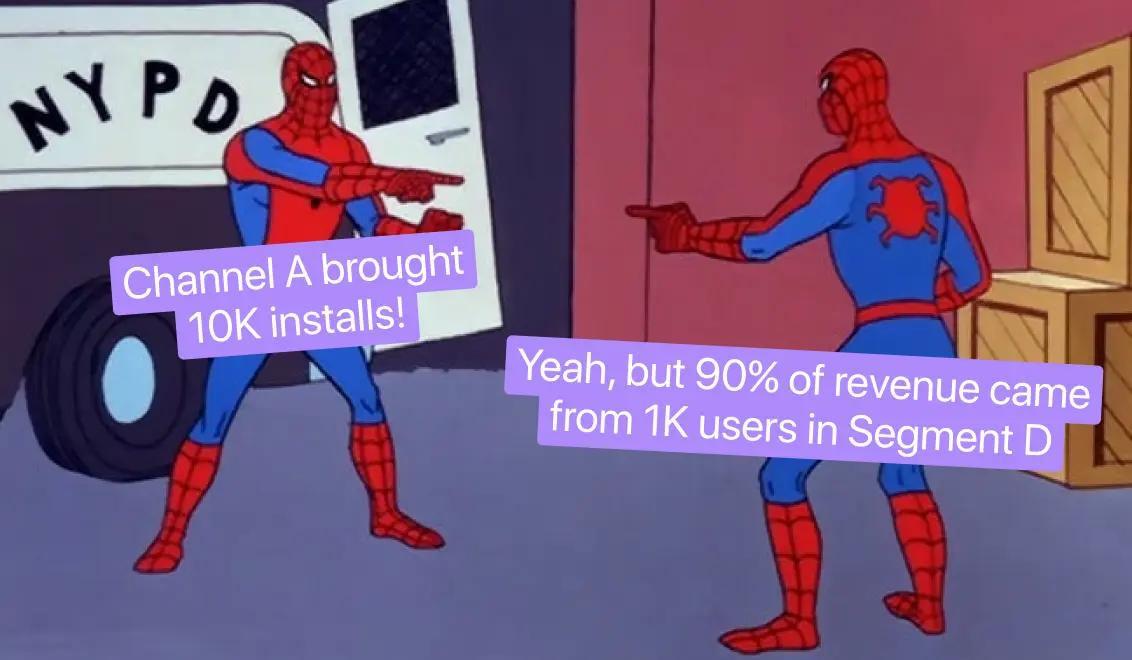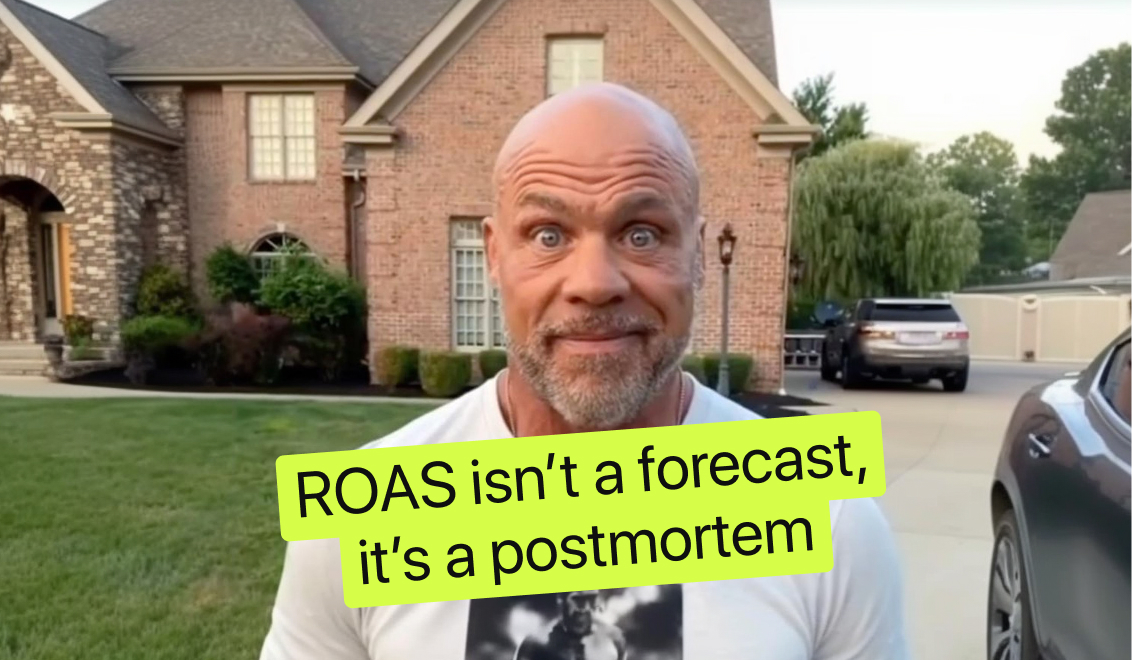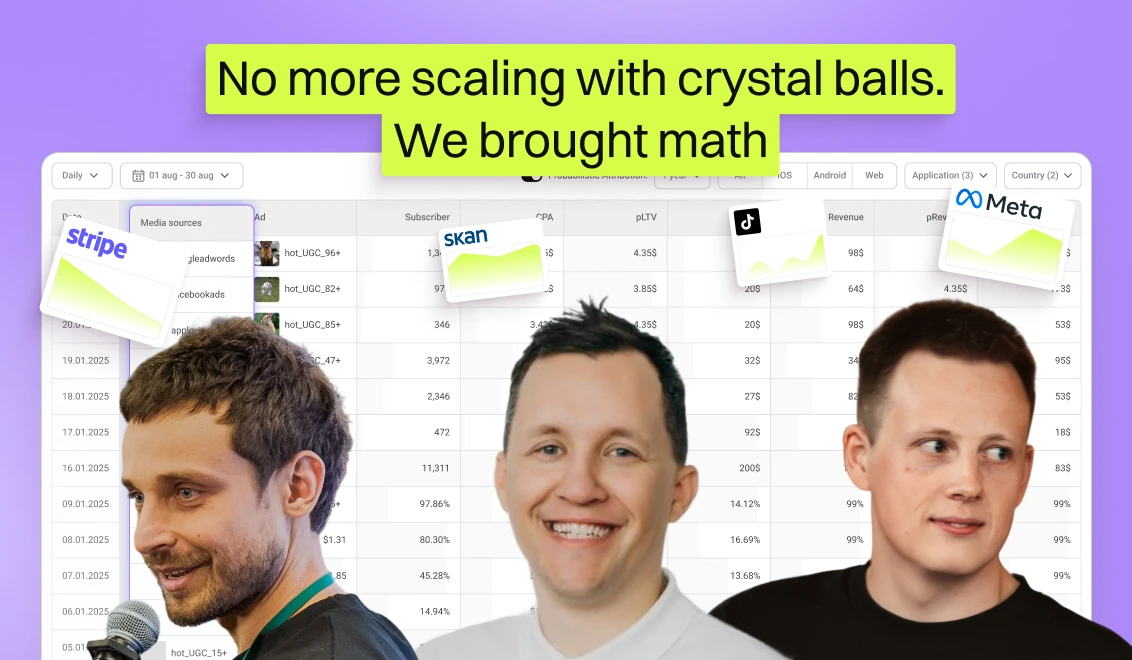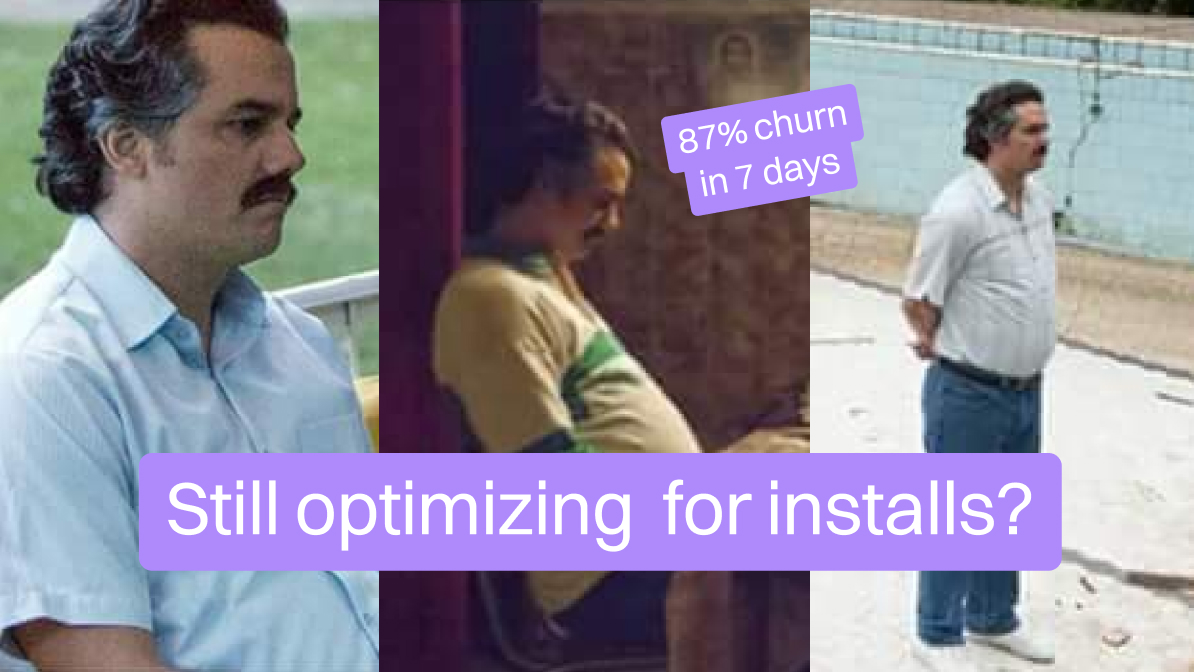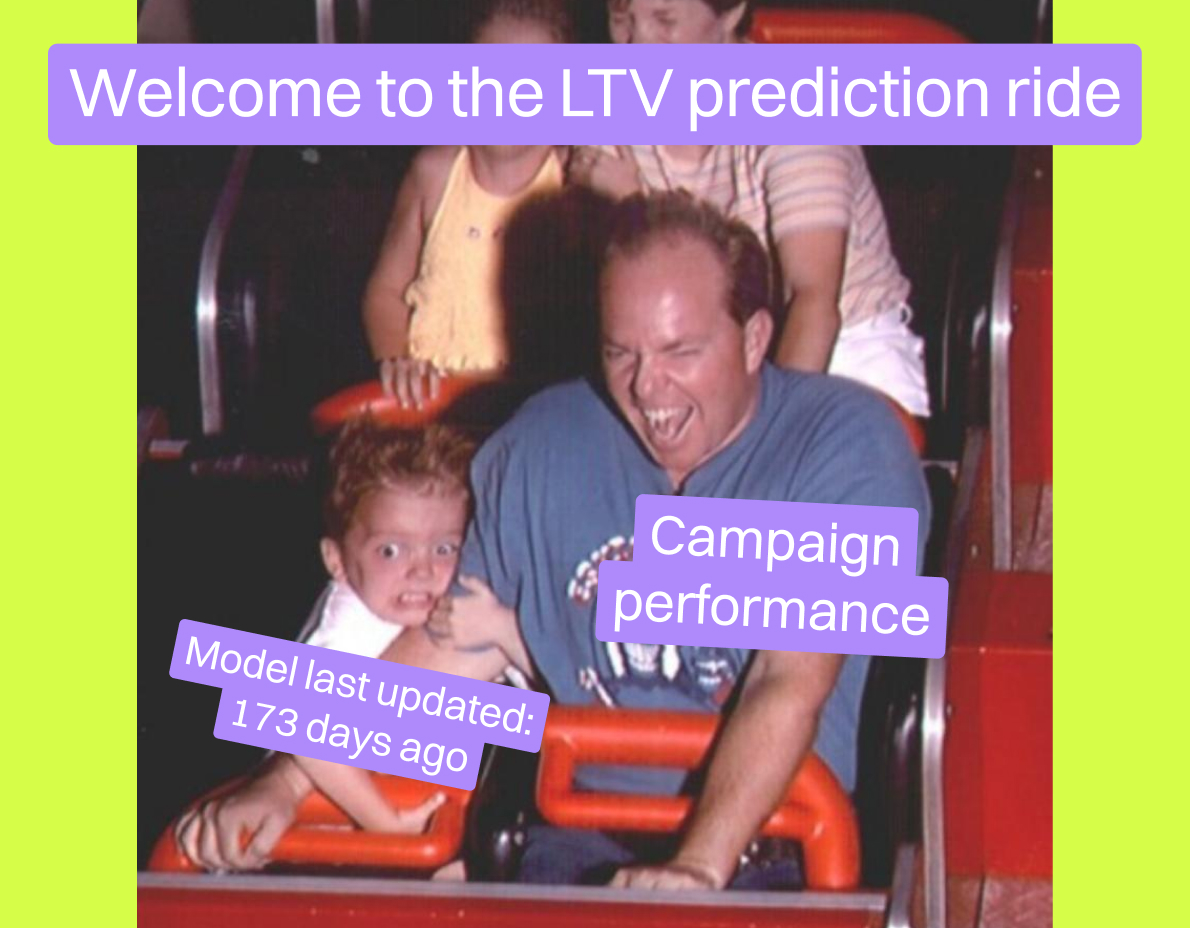The 10× Growth Mindset: Lessons from a head of growth who scaled from MVP to millions

Welcome to The 10× Growth Mindset Series — Campaignswell’s conversations with the people who turn products into growth engines. Each episode dives into how real operators think, test, and build scale that lasts.
Each episode looks beyond tactics and channels to the mindset, mental models, and strategic thinking that make growth repeatable. Whether you’re scaling performance, SEO, or СMO, this is where you learn how to think like the people who build lasting growth.
Today we’re talking with Yasin Kheradmand, Head of Growth at Stakemate, who’s spent years turning early MVPs into revenue machines by blending data, product, and human intuition.
Yasin breaks down what “product-led growth” actually means in practice and why most teams measure the wrong things while chasing it.
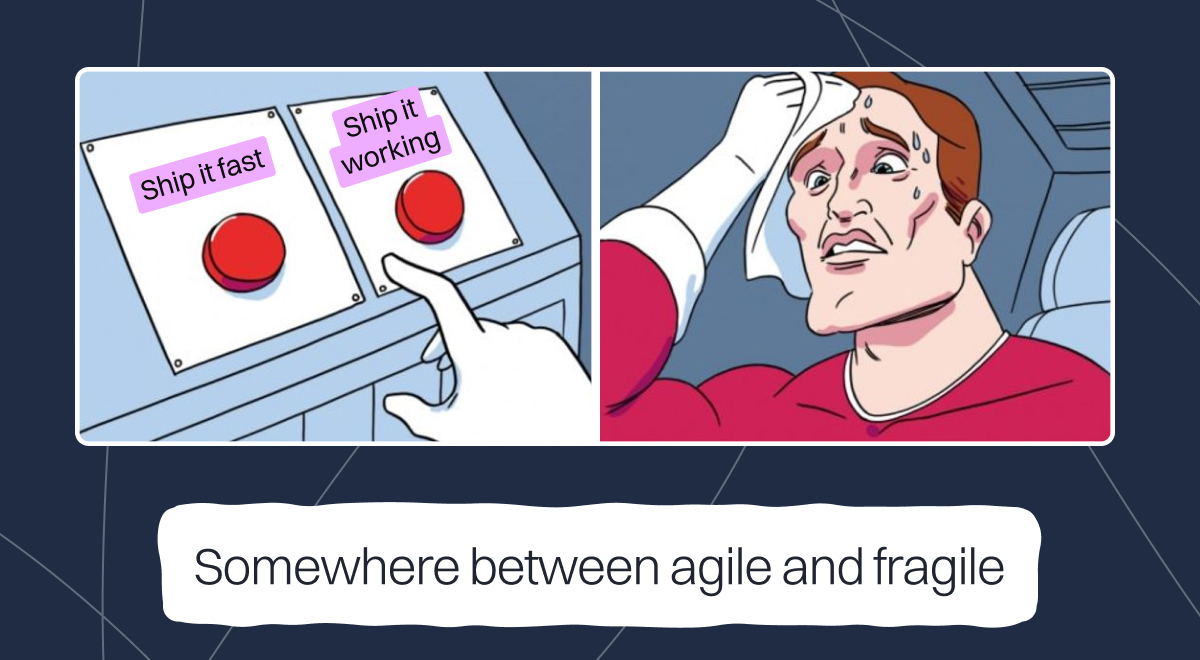
Campaignswell: Tell us about the products you’ve scaled. What kind of results did you achieve?
Yasin: I kicked off my growth journey in 2021 with Huzzle — a graduate recruitment platform working to balance the complexities of a three-sided marketplace. I joined right after they raised funding, one of the first hires, and had to learn growth from the ground up. What surprised me was how product-heavy the job turned out to be. We weren’t just scaling acquisition, we were fixing onboarding flows, tweaking value props, and pushing activation every week. We eventually grew it to over 100,000 active users.
After that, I joined Move78, a product growth consultancy. That’s where things really accelerated. I worked across a range of startups from crypto projects to Waterbear, which was basically Netflix for documentaries. Waterbear hit millions of users globally while I was there. And to be honest, those two years felt like fast-forwarding my growth education. I had mentors who’d scaled campaigns for Nike, BA, Microsoft. That’s also where I properly got into the scientific side of growth: rapid testing, frameworks, compound learning.
The real test came when I joined Stakemate, a challenger sports betting app, where I’m now Head of Growth. When I joined, the app was just past MVP stage with a small user base. But the team were, and continue to be, absolutely incredible. After the businesses I had seen in the past few years, I was struck from day 1 by how committed and dedicated they were, and I knew we would go far together. It was just an exceptionally strong team set up for success, and I knew I had to be a part of this rocketship. Since then, we’ve been growing at 40–50% month over month. I can’t share exact numbers, but revenue is now well into the multi-million pound range, and we’re scaling the team fast. We’re literally at the point where we’ve had to rebuild parts of the infrastructure just to keep up with usage spikes, and our dev team have been so amazing during this time.
Why growth and product can’t be separated
Campaignswell: When you start working on a new product, where does growth begin for you — with marketing, with data, or with the product itself?
Yasin: Always with the product. That’s the first checkpoint. You should start by asking: how close are we to real product-market fit? Not what the team believes, not what people say they like—are users actually coming back and using the thing? If you don’t have that yet, there’s no point throwing money at marketing. Great product design will also try and build growth loops into the product itself. Our team's lead designer does a great job of this.
From there, it’s about data: Who are these users? Where do they come from? How many of them actually exist? Are we targeting a real audience or building for a niche that’s too small to scale? For example, if you tell me you’re building a service app for expecting mothers living in the southwest of England, I’d ask: how many of them are there? And can you actually reach them? Because if the total market is a few thousand people, you’re capping your ceiling from day one.
We would then spend time digging into both numbers and narratives, like analytics, surveys, user interviews, to get a full picture of who we’re serving and how they experience the product.
The cycle of refining the product, analyzing data, and learning from users is continuous. Growth doesn’t come after product, it’s embedded in it. Too often, people separate the two, but in reality, product is growth. It’s one of the original 7 Ps of marketing for a reason.
Campaignswell: How do you know when a product is truly ready to grow?
Yasin: It’s a tough one because “ready” looks different depending on the vertical. But if I had to break it down into some universal signals, here’s what I look for:
First: the founding team actually uses the product. Not just tests it once in a while but uses it regularly to solve real problems. If you’ve built something you personally rely on at least weekly, that’s a good sign you’re onto something useful. It’s especially common in B2B: many founders build tools they wish they’d had in a previous job.
Second: you’ve got early adopters, and they’re sticking. If you’re retaining a couple hundred users for more than a few days, if they’re reopening the app or logging back in consistently, that’s when you know you’re past novelty and into value.
And third: your value proposition is crystal clear. You’ve done the product marketing work to distill the product into one sentence that actually means something to your ICP. If someone can’t explain it back to you after hearing it once, it’s not ready yet.
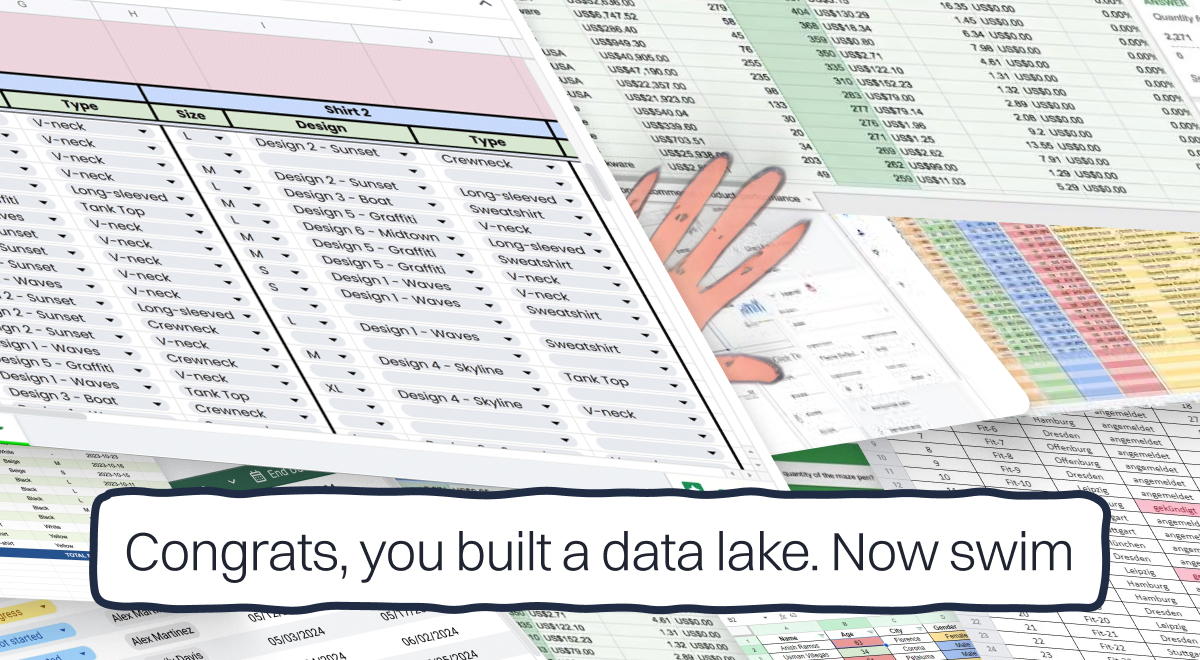
How BI mistakes evolve as companies scale
Campaignswell: You’ve built BI systems before, so in your experience, at what stage does a company usually realize it really needs BI?
Yasin: Almost always too late. You need at least a minimal BI setup from day one. If you're running a product without any kind of analytics, dashboards, or data flow you’re flying blind. At Stakemate, for example, when I came in we already had a very strong analytics infrastructure, and it made my job a lot easier.
There’s a trap on the other side too: building too much, too fast. I’ve seen teams over-engineer their analytics stack, track everything, and end up drowning in dashboards no one uses. Data without clarity is just noise and too much of it can lead to analysis paralysis.
Campaignswell: We often hear teams say: “We built a BI system, but no one actually uses it.” Have you seen that happen in your experience?
Yasin: Unfortunately, this happens constantly. I’ve seen BI systems built with the best intentions and then completely ignored by the people they were meant to help. Why? Three big reasons.
First, the end users often lack data literacy. They’re expected to pull insights from dashboards, but no one’s taught them how. Second, there’s rarely enough documentation or context around the data. You can give someone access to a dashboard, but if they don’t know what the metrics mean or where the data comes from, it’s useless. And third, the teams building dashboards are often disconnected from the teams consuming them.
To fix that, the people asking for dashboards need to get better at asking the right questions. I’ve seen so many requests like “we need a retention report” but that’s too vague. Retention of what? Weekly or monthly? Based on logins? Purchases? In-app events? One time, a client team member asked me for a churn rate, right after I’d given them retention rate.
At the end of the day, great BI starts with great questions. That’s why in most companies I’ve been in, I’ve personally done both sides — asking the questions and digging into the answers. Because if you don’t know what you’re looking for, no dashboard in the world can help you find it.
Campaignswell: What are the most common mistakes or misconceptions you see when teams try to build or use BI?
Yasin: It depends a lot on the stage the company’s at but the mistakes are surprisingly consistent.
In early-stage businesses, the classic trap is trying to track everything. Teams start instrumenting every button tap, every scroll event, every hover without asking why. As a result, they get a flood of data that no one can interpret, and no one has time to act on. If you don’t have a clear question you’re trying to answer, that data’s just noise. Early on, you should focus on the key flows and funnels that matter: sign-up, activation, purchase. Track them end to end, improve what breaks, and ignore the rest.
In later-stage companies, the mistake flips: people stop paying attention to data entirely. As the org scales, the gap between the people building dashboards and those trying to use them gets wider. Data becomes a thing “someone else” owns. Insights stop flowing. And you lose that sharp, decision-making edge that helped you grow in the first place.
That’s why building a data-literate culture is so important, especially as you scale. Everyone doesn’t need to write SQL, but they do need to know what questions to ask, and how to use data to do their job better.
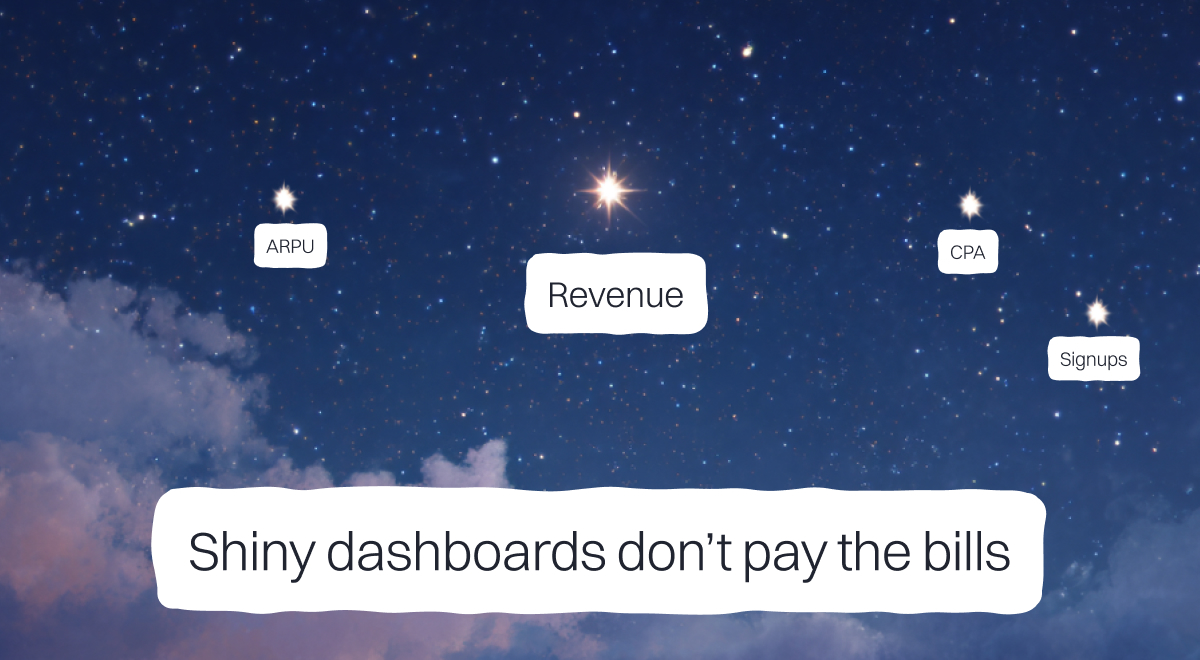
What to measure and what to ignore
Campaignswell: Since you mentioned the risk of drowning in too much data, let’s flip the script. What do you track daily? What are the core metrics you keep an eye on?
Yasin: My dashboard’s all about traction and conversion. I check signups and key down-funnel conversions multiple times a day: how many people are landing, activating, converting. But those numbers don’t mean much without context, so I’m constantly tying them back to acquisition: what’s our CPA looking like across channels? Did that new campaign push qualified traffic?
Beyond that, revenue and turnover are always on the radar. I also keep a close watch on retention metrics, specifically how they’re influenced by CRM campaigns and feature usage alongside the product manager and the CRM team. Some days, we’re zooming in on one feature to see if usage correlates with longer stickiness. Other days, we’re checking if a drop in reactivation is linked to email fatigue. Having a product manager who asks thoughtful, precise questions is invaluable. I’m genuinely lucky to have someone like that on our team.
It’s a balancing act: stay focused on what moves the needle, but always be curious enough to go deeper when something shifts.
Campaignswell: What’s your north star metric or metrics?
Yasin: I’ll be honest, I’m not a fan of the whole “North Star metric” framework. It sounds good in theory, but in practice, it often leads teams in the wrong direction.
For me, and a lot of my own team members will disagree with this, the only true "North Star" is revenue. That’s what businesses exist to drive. If you pick some proxy metric that seems tied to revenue, like signups, CPAs, or ARPU, it may hold for a while. But the moment you start optimizing for it directly, you risk falling into the Goodhart’s law trap: when a measure becomes a target, it stops being a good measure.
I’ve seen it happen firsthand. Say your ARPU is £45, and you decide to scale acquisition, more signups should mean more revenue, right? So you pump more money into ads, expand channels… and a few months later, your ARPU’s dropped to £22. Why? Because the new users aren’t as valuable, and you optimized for quantity, not value. It’s the same with CPA. So our focus is always on revenue and payback period. Those are the metrics that reflect actual business health.
Campaignswell: And what tool do you use to measure that, especially considering how tricky revenue attribution can be?
Yasin: Yeah, revenue is notoriously hard to pin down. Especially with MMPs, it’s rarely more than 50% accurate. But you can still spot trends.
I like to take a blended approach. We track overall revenue across the business using backend data, and I use Mixpanel as my main BI dashboard to monitor overall performance, and Appsflyer to get some idea of channel-specific performance. It gives me enough signal to see which channels are improving, which are flat, and which aren’t converting at all.
It’s not perfect, but it’s enough to make smart budget decisions and reallocate based on what’s actually driving returns. Unfortunately this is the truth of app marketing in 2025.

Campaignswell: What’s one “cheater” metric that usually misleads teams?
Yasin: Stickiness is probably the worst offender. It sounds impressive, especially if you’re pitching to investors, but for day-to-day product or growth decisions, it doesn’t say much. All it really tells you is how often users open your app, but that’s often dictated by the product’s nature, not its success.
If you’re Google Maps, your stickiness should be close to 1. People use it every day. But if you’re a sports betting app like us, users might log in once or twice a week. So what does a stickiness score of 0.2 or 0.6 actually tell you? Not much. It just confirms something you already know intuitively.
Retention is another tricky one. It sounds solid, but there are so many ways to define and manipulate it. You can inflate it by pushing out emails or app notifications just to get users to open the app, especially if your metric is based on sessions or app opens. You can make it look great or terrible, depending on how you slice the cohort or timeframe.
Ultimately, both stickiness and retention can be useful, but only if you define them clearly and know exactly what behavior they’re capturing. Otherwise, they become vanity metrics. If you want to understand real value, start with revenue.
Campaignswell: Do you see predictive metrics as essential? When do they actually start to matter, and what do you use them for in your growth work?
Yasin: Yes, I use predictive metrics, and once you hit a certain scale, I’d say they’re not just useful, they’re essential.
We have a kickass AI team, and we’ve built our own machine learning models for LTV prediction. I can’t share too many details, but they help us make smarter targeting decisions. In betting, bonuses are a big part of the experience, so being able to predict which users are likely to be high-value means we can give them better incentives, while holding back on users who aren’t likely to convert.
Churn prediction is another big one. Most good CRM platforms include it now, and it’s incredibly useful for triggering win-back or retention campaigns before users fully drop off. You don’t need to wait for churn to happen, you can act earlier.
Would I say you need predictive metrics from day one? No. If you’re in startup mode, probably not worth the complexity. But once you hit scale, especially if you’re spending over £1M a year on marketing, then you can’t afford to ignore them. At that level, even small improvements in targeting or retention can translate into massive gains.
Campaignswell: So what does your growth setup actually look like? What tools and systems do you need in place to keep your key metrics in check and know what’s really working?
Yasin: For us, it’s all about full-funnel visibility. You need to see every step, from first touch all the way to what users do in the product. That means building dashboards that don’t just show traffic or clicks, but actual conversion paths.
And beyond visibility, you need attribution you can trust. If we send an email, I want to know: who got it, who opened it, and who took action. Did they convert? Did they churn? You need to be able to connect the dots between the message and what happened next. That’s the setup that enables real growth decisions.

Why growth fails and how to build it right
Campaignswell: How do you find the balance between “let’s build a great product first” and “let’s start marketing now”? What do you think really defines success — a strong product or great marketing?
Yasin: I don’t think you can separate the two. Product is marketing. They have to evolve together. For example, our team’s lead designer consistently looks at how each feature can drive growth. He will categorically refuse to build things if he doesn’t have conviction they will help growth, and that’s an amazing quality to have in a designer.
I’m not saying “build a great product and users will magically appear” — that’s a myth. What I am saying is: build a strong product with strong marketing baked in from the start. The best teams I’ve worked with are the ones where product managers and product marketers are in sync, talking to users together, shaping the roadmap around real-world insights, and figuring out how to tell the story as the product takes shape. Our product manager, for example, has a marketing background and intuitively understands why this matters. It makes my job so much easier.
You should start marketing once you’ve got a solid MVP and early adopters are sticking around. That’s the moment to start listening closely: why do they keep using it? What are they telling their friends? That’s where the story lives and that’s the story you take to market.
But even earlier than that, your users should already be part of the process. If you’ve built something without talking to them first, you’ve missed the point. The best products come out of real pain points, like how Monzo and Revolut nailed the “my bank sucks” problem and offered a cleaner, faster, app-first solution. That’s product and marketing working hand in hand from day one.
Campaignswell: For mobile apps specifically, what’s your go-to strategy for growing LTV or revenue?
Yasin: There’s no single playbook but if I had to focus on just two things, here’s where I’d put my energy:
First: ad creative. In 2025, every business is a content business. If your ad content works, your acquisition will scale. Focus on making great video creatives that convert.
Second: user experience. You’ve got to be obsessed with retention. Especially in subscription-based apps, LTV growth comes from keeping users engaged and subscribed. That means smart offers, timely CRM nudges, and making sure people keep seeing value every time they open the app.
That’s the combo I’d lead with ads that bring people in, and an experience that makes them stay. Too many people ignore CRM too.
Campaignswell: What’s the biggest lesson you’ve learned from scaling products to £10m+ revenues?
Yasin: Always stay close to your users. From the moment the idea forms, talk to people. Validate it. Read The Mom Test. Make sure the problem you’re solving actually matters and that people are willing to pay for the solution.
I’ve worked on a lot of early-stage startups, and I’ve seen more fail than succeed. In most cases, it wasn’t the execution that killed them, it was the product idea itself. A good team with a good idea will always succeed. An amazing team with a bad idea will always fail.
Take the classic “what are my friends up to?” app. Sounds fun in theory, but in reality, no one wants yet another social feed. It’s been tried a million times, and users just don’t care. Another one was a food-finder app — again, something people already do effortlessly with Google Maps. The use case wasn’t strong enough to justify switching.
These weren’t failures of marketing or growth strategy. They were products that never had a real shot because they didn’t solve real, painful problems.
One of the best pieces of advice I’ve heard is: don’t build a product that’s just a feature of someone else’s product. If it can be replaced by a tab inside an existing app, it probably won’t stand on its own.
So yeah, the biggest lesson? Start with a real problem. Validate it early. And never stop listening to your users.
Campaignswell: Is there a common point where growth tends to break down?
Yasin: I’d say there’s two. The first one is growing off the back of performance media forever. You will always hit diminishing returns as the market saturates with your product and you run out of your ICP. The second one is having horrible retention with a massive hole at the bottom of your funnel.
Campaignswell: In your experience, what do growth teams tend to overestimate and what do they consistently underestimate, even though it’s what actually drives revenue?
Yasin: A lot of teams overestimate interest. People get obsessed with their own product. They’ve thought about it day and night, crafted every feature, and assume users will be just as hyped. They think people will dive in, explore everything, and appreciate the craft. But the truth is: people don’t care. If you can’t explain in three seconds why they should, they’ll bounce.
What’s underestimated? One of the biggest blind spots is user value. Too many teams overlook the actual economic impact their users bring. Not all users are equal, and once you realise that, everything shifts. Paid acquisition, CRM, retention efforts — they all need to revolve around that value. And related to that, a lot of product-led teams also underestimate marketing itself. They treat it like a surface-level function, not like the strategic growth driver it actually is. Thankfully, our product team aren’t one of them, and I’m incredibly grateful for it.
A note from us at Campaignswell
If you’re reading this, chances are you care about growth the same way we do — not as a buzzword, but as a discipline. You’re data-savvy, you think strategically, and you know real growth comes from the intersection of product, marketing, and insight.
That’s exactly where Campaignswell can help.
We believe growth doesn’t happen because you push more spend or chase prettier dashboards. It happens when teams actually understand what drives impact and make decisions that compound over time.
We’re a SaaS BI platform that gives you all the advantages of an in-house BI team, just faster, simpler, and at a fraction of the cost.
What Campaignswell do:
- connect all your data, channels, and product metrics in one workspace,
- restore full attribution,
- calculate net revenue across channels and cohorts,
- use predictive models to uncover your gold-mine segments — the users who actually drive sustainable growth.
If that sounds like your kind of thinking, come see it live.
👉 Book a demo.

Co-founder & CEO at Campaignswell


